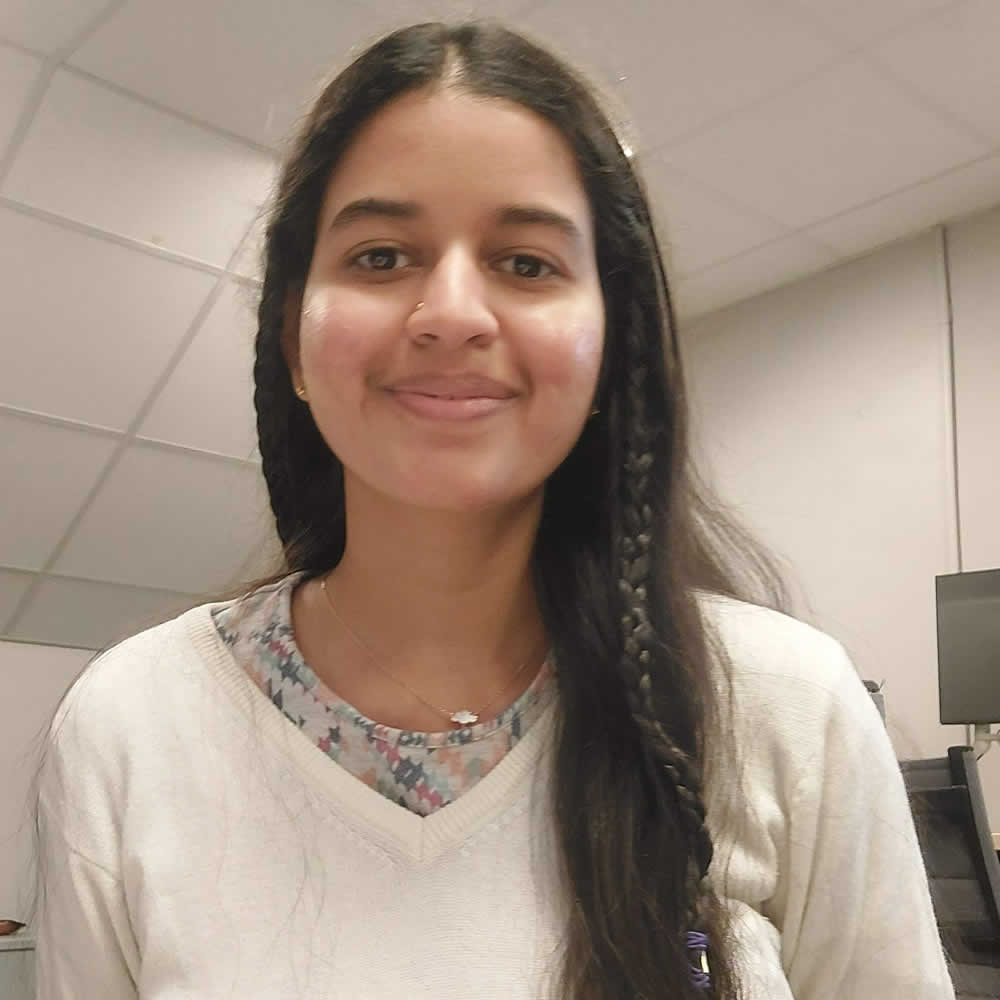
Maitreyee Sharma Priyadarshini
Postdoctoral Research Associate
Johns Hopkins University
Dr. Maitreyee Sharma Priyadarshini is currently a Postdoctoral Research Associate with Prof. Paulette Clancy and Prof. Rigoberto Hernandez at Johns Hopkins University. Her postdoctoral work focuses on developing computational material discovery algorithms and multi-scale material models for energy and space applications. Before this, she completed her PhD in Aerospace Engineering with Prof. Marco Panesi at University of Illinois, UrbanaChampaign. In her dissertation, she developed a computational framework to accurately predict and mitigate heating on spacecraft surfaces. Maitreyee’s work has been recognized by multiple awards and honors, including Aerospace Engineering Alumni Advisory Board Fellowship (UIUC), Rising Stars in Aerospace (MIT), Mavis Future Faculty Fellowship (UIUC), Outstanding Asian & Asian American Graduate Student Leader Award (UIUC), Block Grant Fellowship (UIUC) and one of the nine UIUC finalists nominated for the Schmidt Science Fellows National Competition. Maitreyee is committed to enhancing diversity, equity, and inclusion in STEM through mentoring, outreach, and service activities, most recently as an elected member of the Committee of Diversity and Inclusion, Chemical and Biomolecular Engineering Department, JHU.
A Class of Physics-Informed Material Discovery Tools
The lack of efficient discovery tools for advanced functional materials is a major bottleneck to enabling next-generation energy, health, space, and sustainability technologies. One main factor contributing to this inefficiency is the large combinatorial space of candidate materials which is very sparsely observed. Moreover, searches of this large combinatorial space are often biased by expert knowledge and clustered close to material configurations that are known to perform well. Experimental characterization and first principles quantum mechanical calculations of all possible materials are extremely expensive leading to small data sets not suitable for a number of approaches, such as Deep Learning. As a result, there is a need for computational algorithms that can efficiently search this large space.
My research introduces a class of methods that combine physicsinformed belief models with Bayesian optimization (BO). A material is characterized by physical and chemical properties of components of the material in a complex manner but a priori knowledge of the identity of the important properties is often lacking. The first method I have developed is PAL 2.0 [Romiluyi, Sharma et al, in preparation]. The key contributing factor of our proposed framework is in the creation of a hypothesis space with all possible Gaussian process representations of the domain using these different elemental/molecular properties and the ability to select the hypothesis (belief model) that best represents our material design domain. The best hypothesis is then used to perform a search of the material space. Our method is unique since it picks out the physical descriptors that are most representative of the material domain making the search unbiased toward expert knowledge, which in many cases is unknown. The model also provides valuable chemical insight into the domain that can be used to develop new materials that were outside the domain that was initially searched. Some applications of PAL 2.0 include perovskite solar cell and thermoelectric semiconductor materials, fig. 1. The second part of my work focuses on material discovery algorithms for alloys which combine the PAL 2.0 methodology with Gaussian Process-Neural Network (GP-NN) models [Clancy, Nam, Sharma, HEMI Seed Grant, 2023]. The novel combination of GP-NN+BO algorithm makes use of the generalization power of Deep learning models [Sharma et al, PCCP, 2023] and the exploratory power of the BO algorithm at a minimal computational cost. Results shown in fig. 2 demonstrate the out-performance of the GP-NN model which on average explores just 15% of the space to find the optimal solar cell material. A third topic that I have worked on is the innovative approach of Thermal Protection System (TPS) doping with appropriate heat absorbing molecules will result in an increased payload weight that spacecrafts are capable of carrying, making space missions more efficient and cost effective. Overall, by accelerating discovery for materials like high-entropy shape memory alloys, space solar cell materials, thermoelectrics and TPS materials, these methods will enable creation of large data sets for various material classes that can then be leveraged in training deep learning models for property predictions and multi-scale modeling.